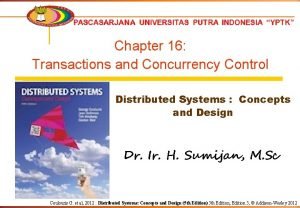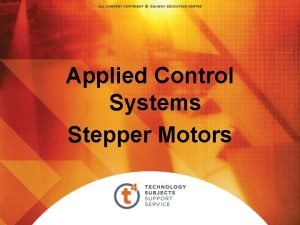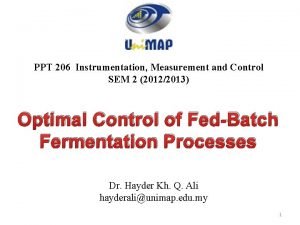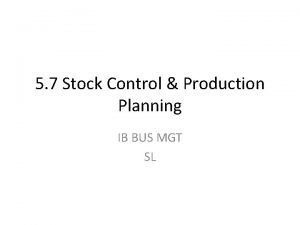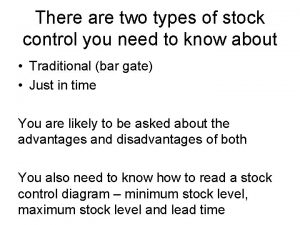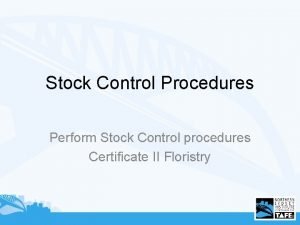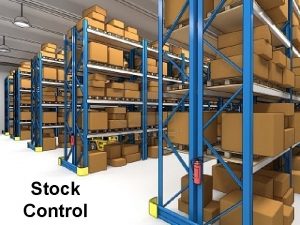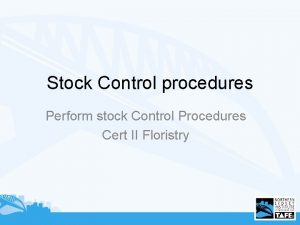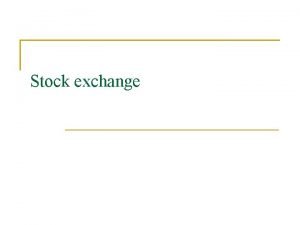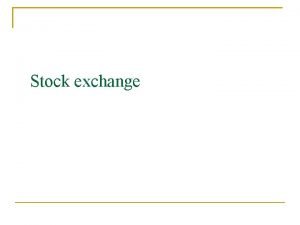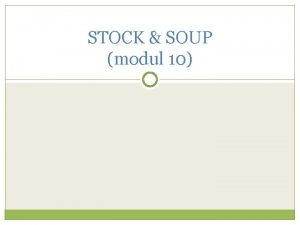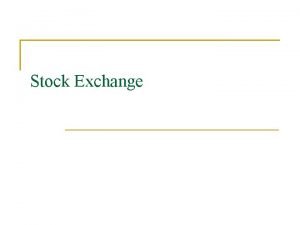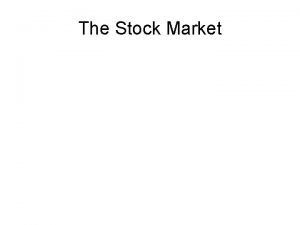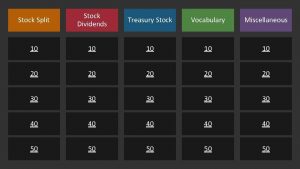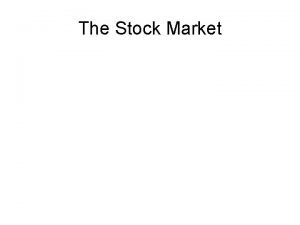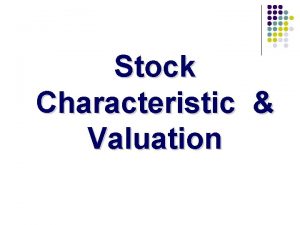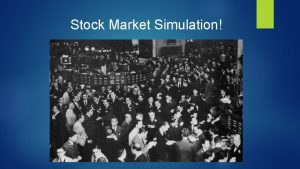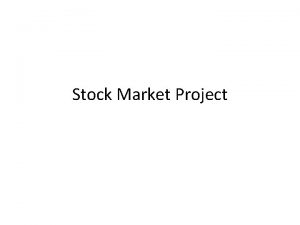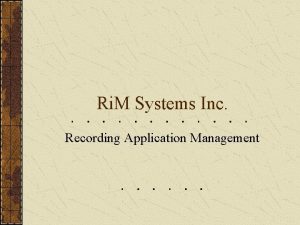Stock Recording and Control Stock Recording Systems u





















- Slides: 21

Stock Recording and Control

Stock Recording Systems u The recording of stock movements is an important part of Stock Control u Stock Recording Systems should be in place eg – Bin Cards for each item of stock held, recording all stock removed and added – Stock Record Cards (which will also show prices of receipts and issues of stock)

Location of Stock u Location of Stock will depend upon: – The type of production process – The nature of materials eg are they flammable? – The time taken to transport the materials from the stores to the production cost centres

Storage of Stock u How and where stock is stored will depend upon: – The weight of the goods – The bulkiness of the goods – The risk of physical deterioration – The risk of theft

Stock Taking u Physically checking your stock is necessary to ensure that stock records are accurate and as a deterrent against theft. u Stock taking can be: – Periodic ie annually – Perpetual ie ongoing where the balance of stock is updated after every receipt and issue

Stock Levels There are disadvantages in having too much stock or too little stock u Overstocking causes: u – High storage costs – Cash being paid out before it is necessary – High risk of deterioration or obsolescence u Understocking causes: – Running out of stock and holding up production

Stock Control u An efficient Stock Control system would include setting a: – Maximum level of stock – Minimum level of stock – Reorder level for stock – Reorder quantity

Maximum Stock Level u This is the level by which stock should not rise above. u When setting a Maximum Stock Level the following should be considered: – The cost of storage – The rate of usage – The delivery time of stock from the time the order was placed

Minimum Stock Level u This is the level by which stock should not fall below. u When setting a Minimum Stock Level the following should be considered: – The rate of usage – Delivery time – The level of safety or “buffer” stocks to be held

Reorder Level of Stock u This is the level at which an order for new stock should be made. u When deciding on the reorder level the following should be considered: – Rate of stock usage – Level of buffer stocks – The cost of storage

Reorder Quantity u The reorder quantity is the quantity of materials to be ordered when stocks reach the reorder level and will depend upon: – Cost of ordering the stock (taking into account any discounts for bulk buying) – Cost of storing the stock

Methods of Valuing Stock u There are 3 main methods of valuing stock – First In, First Out (FIFO) – Last In, First Out (LIFO) – Weighted Average Cost (AVCO) u Whichever method is adopted must then be adhered to - the Concept of Consistency

First In, First Out (FIFO) u The first goods received are deemed to be the first goods to be issued. – Consider a supermarket restocking its shelves – old stock is moved to the front of the shelf and the new stock placed at the back. Hopefully, shoppers will select the old stock first.

Advantages of FIFO u The prices are based on actual cost, therefore no profit or loss can arise u The stock value is a fair representation of current values because the stock value is based on the most recent purchases u It is a logical method as normally goods would be issued in the same order as they are purchased

Disadvantages of FIFO u The price the goods are issued at may be out-of-date u Clerical errors may be made u With changing prices, a comparison of the cost of one job with another may be misleading u When prices are increasing, the charge to production may be low but the replacement price of

Last In, First Out (LIFO) u With this method, as each issue of goods is made they are deemed to come from the last batch of goods received and u Where the last batch received are insufficient to meet the issue, then the balance is deemed to come from the next previous batch available

Advantages of LIFO The prices are based on actual cost, therefore no profit or loss can arise. u The price of issues is fairly up-to-date, because issues are valued at the price of the most recent batch of purchases. u The charge to production is therefore up-to -date, and the cost of replacing stock should not be very different. u The information which management will receive is realistic because the issues are an indication of current costs u

Disadvantages of LIFO u The stock value which results is based on the oldest stocks and therefore could be out-of-date. u Clerical errors can arise. u A comparison of different jobs may be misleading – 2 similar jobs may have very different costs attached.

Weighted Average Cost (AVC) u With each receipt of goods, the average cost of goods held in recalculated. u Any subsequent issue is then made at that price until a further receipt of goods necessitates the average cost to be recalculated.

Advantages of AVCO u The prices are based on cost, and the method is generally accurate, provided the unit price is set carefully. u It is a sensible system which operates on the basis that if parts are identical, the prices should also be the same u It avoids involved calculations for every new issue and receipt of

Disadvantages of AVCO u The only disadvantage of AVCO if that there is usually a need to fix prices to several decimal places if they are to be accurate.
 Stock control e flow control
Stock control e flow control Long-term debt preferred stock and common stock
Long-term debt preferred stock and common stock Characteristics of common shares
Characteristics of common shares White stock dan brown stock
White stock dan brown stock Stock final de marchandises
Stock final de marchandises Decision support systems and intelligent systems
Decision support systems and intelligent systems Transactions and concurrency control in distributed systems
Transactions and concurrency control in distributed systems Step motors and control systems
Step motors and control systems Instrumentation and control systems ppt
Instrumentation and control systems ppt Pessimistic concurrency control
Pessimistic concurrency control Introduction to digital control
Introduction to digital control Introduction to digital control system
Introduction to digital control system Instrumentation and control systems ppt
Instrumentation and control systems ppt Process and product control
Process and product control What is a positive and negative control
What is a positive and negative control Control flow error
Control flow error What is the meaning of inventory control
What is the meaning of inventory control Stock control chart ib business
Stock control chart ib business Two types of stock
Two types of stock Stock control procedures
Stock control procedures Principles of complex systems for systems engineering
Principles of complex systems for systems engineering Embedded systems vs cyber physical systems
Embedded systems vs cyber physical systems






